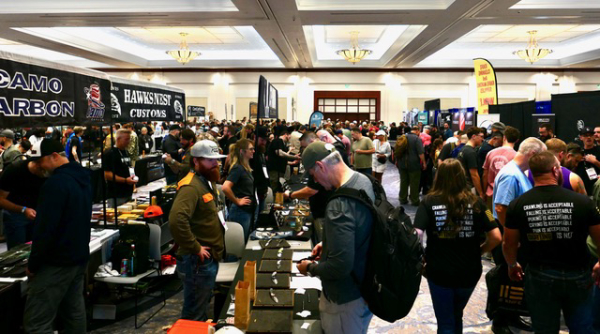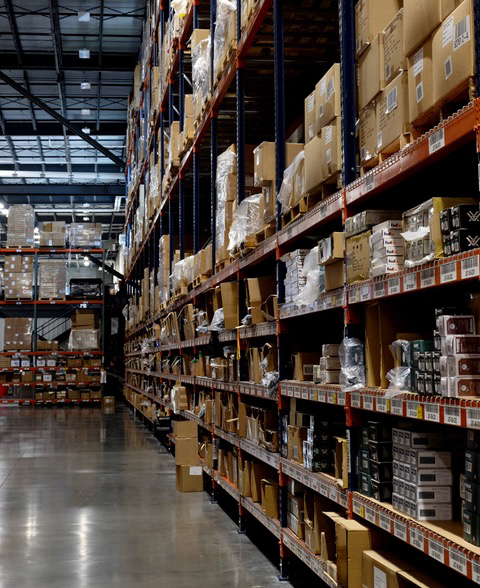For the past few weeks, companies throughout the industry have quietly been reducing headcount, idling manufacturing lines and stockpiling raw goods as they try and prepare for whatever the next crisis might be.
Whether you’re concerned at the increasing possibility of “Summer of Love 2.0,” a “Trump Slump,” or just the economic squeeze everyone’s feeling, there’s worry enough to go around and baskets of uncertainty to spare.

It’s an open secret that the firearms side of the industry is lagging. When you see manufacturers discounting and retailers dropping prices on top of that, things aren’t rosy.
If you’re looking to buy a new gun that’s caught your eye, now might be the time-if you can pay cash. If you’re looking for bargains in used guns, don’t bother. I’m told the resale market is what’s sustaining many retailers these days.
The RV and boating dealers have it even worse. Big ticket items facing high financing rates and consumer uncertainty are the first things to fall by the wayside. These are the times when a customer’s disposable income is clearly defined. Buying with a credit card looks a lot like borrowing from the local loan shark.
Everything coming in from overseas, from parts to finished products, is more expensive. That’s not an overstatement. But it’s inaccurate to blame it all on the administration’s on-again/off-again tariffs. The global supply chain still hasn’t untangled from COVID.
Tariffs, however, are a primary driver in the extinction of cheap imported goods. Cheap stuff that doubles in price is no longer cheap.
Israel’s shellacking of Iran may be good for the global community in the long term, but in the meantime, oil supplies are a big concern. Crude oil prices have risen since the shooting started. If Iran decides to attack shipping in the Strait of Hormuz, prices will rise faster than a Ukrainian drone headed for a Soviet airbase.
The entire outdoor industry, including non-traditional activities that don’t include hunting or fishing, is feeling the pinch.
The Outdoor Industry Association (OIA) has combined its summer and winter gear shows into a single event. Over the past two years core OIA supporters, from Patagonia and Orvis to REI have suffered revenue drops, downsized, or in the case of smaller makers, simply shuttered.
There are several factors. The biggest single bump in the outdoors was, without a doubt, COVID. People reconnected with the outdoors. Some couldn’t stand being confined. Others went because of the sudden windfall of “free” government money. From guns and kayaks to cycling and camping, gear flew off the shelves.
Retailers and manufacturers jumped to meet the demand.
Unfortunately, not everyone took time to manage. Rather recognizing a rare blip on revenue screens, some saw unlimited good times ahead. So…those short-sighted manufacturers increased as retailers ramped-up hiring, increased orders and laid in all the inventory they could get- at higher-than-previous prices.
When the COVID lockdowns- and the free government money dried up, those new outdoor lovers came back inside, started scrolling their screens, began to travel and in many cases, dumped their “like-new” gear.
Retailers were stuck with huge inventories, constrained cash flows and the choice of either marking prices down and taking their lumps, or downsizing. Manufacturers orders dried up, too.
In 2022, outdoor outings dropped nearly seven percent. In 2023, the drop was eleven percent.


Retailers and manufacturers found themselves mired in excess inventory.New products introductions were delayed, and inventories turned stagnant because consumers weren’t motivated into action by new products.
As retailers started dumping inventory, inflation had already crippled many consumers’ buying.
Net result? The dreaded domino effect.
As 2024 came to a close, companies realized they had to do something to bolster 2024 numbers. Some announced layoffs, others announced more layoffs. Some small manufacturers consolidated into larger companies. Others simply disappeared.
These most recent layoffs make it obvious the manufacturers aren’t seeing any immediate relief. They’re tightening belts. We’ve seen it via the cancellation of several scheduled media events. If you’re not introducing new products, there’s no benefit to bringing out media.
That’s not saying no new product will be introduced through the end of 2025. I’m traveling much of the rest of June to preview some. But several companies have shelved new introductions. They’re waiting until the economy either gives consumers some relief or things stabilize enough for them to have reasonable marketing expectations.
As always, we’ll keep you posted.
—Jim Shepherd